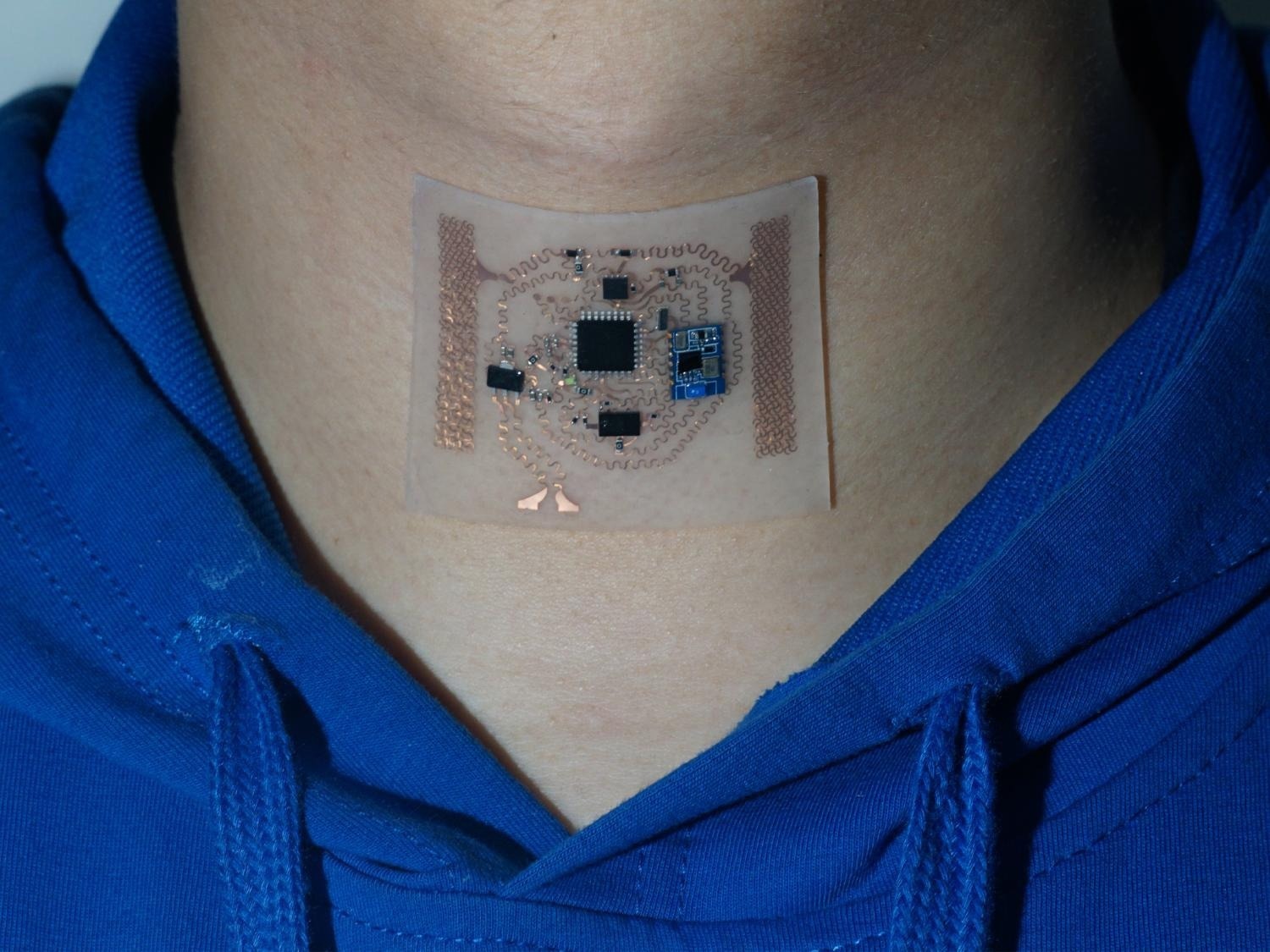The implementation of wearable medical sensors has made it possible to monitor and assess treatments remotely. However, it can be challenging for medical professionals to swiftly make diagnoses and develop treatment strategies based on a variety of data points, such as breathing, heart rate, muscle movements, speaking, and swallowing.

Engineering researchers created a new stretchy, wearable throat sensor that records vibrations and electrical muscle impulses from the neck area to monitor a user’s speech and swallowing patterns. Image Credit: Huanyu Cheng. All Rights Reserved
According to a Nature Communications study, engineering researchers developed a machine learning framework that can forecast and evaluate data points from wearables more effectively. They used the platform with a recently developed flexible wearable throat sensor that tracks electrical muscle impulses and vibrations from the neck region to analyze swallowing and speaking patterns in users.
Soft, stretchy on-throat devices are needed in the health care market to continuously monitor the muscle and swallowing movements of patients with throat conditions to properly diagnose and treat them. Devices currently in use only provide limited information about the patient’s health condition and are bulky and uncomfortable.
Huanyu “Larry” Cheng, Study Principal Investigator and James L. Henderson, Jr. Memorial Associate Professor, Engineering Science and Mechanics, Pennsylvania State University
According to Cheng, the wearable patch is made of a composite hydrogel electrode interface that was made to endure user motions on the skin's surface while preserving high signal quality. The insoluble hydrogel substance is pliable and simple to use.
He added, “The hydrogel can directly interface with the skin and provides a conductive property for the sensors.”
Libo Gao, an associate professor at the Pen-Tung Sah Institute of Micro-Nano Science and Technology at Xiamen University in China and co-principal investigator, explains that the hydrogel sensor gathers vibrations and muscle movement data to feed a machine learning algorithm for analysis. Following data collection and processing, healthcare practitioners can access the data remotely via a specially designed cloud interface.
The patient data is collected by the patch at different frequencies, depending on the statistic type, such as swallowing, speaking or respiration. The algorithm groups the four frequencies into one streamlined output, which makes the data much more useful for health care providers to quickly look at and judge.
Libo Gao, Associate Professor, Pen-Tung Sah Institute of Micro-Nano Science and Technology, Xiamen University
According to Gao, the system can anticipate patient data with over 90% accuracy after gathering the patient’s throat movement data for one minute and training offline for three hours. This is because the algorithm has adaptive capabilities and memory functions.
According to Cheng, clinicians can use the predictive data to anticipate treatment outcomes and make diagnoses early.
He stated, “Adaptive machine learning could also help account for the individual differences in data among a large population so that researchers can make inferences on the health of a large population based on individual datasets.”
The other study coauthors are Hongcheng Xu, Weihao Zheng, Weidong Wang, Yangbo Yuan, Ji Zhang, Zimin Huo, Ningjuan Zhao, Yuxin Qin, Ke Liu, Ruida Xi, Gang Chen, Haiyan Zhang, Chu Tang and Junyu Yan from Xidian University, China; Yang Zhang, Daqing Zhao, and Lu Wang from the Air Force Medical University, China; Yunlong Zhao from Xiamen University, China; Yuejiao Wang from Tsinghua University, China; Qi Ge from the Southern University of Science and Technology, China; and Yang Lu from the University of Hong Kong, Hong Kong SAR.
The study was supported by the National Natural Science Foundation of China, the Natural Science Foundation of Shaanxi Province, the China Postdoctoral Science Foundation, the Fundamental Research Funds for the Central Universities, the Key Research and Development Program of Shaanxi, the Shenzhen-Hong Kong-Macau Technology Research Program, the Fundamental Research Funds for the Central Universities and the Innovation Fund of Xidian University.
Journal Reference
Xu, H., et. al. (2023) A fully integrated, standalone stretchable device platform with in-sensor adaptive machine learning for rehabilitation. Nature Communications. doi:10.1038/s41467-023-43664-7